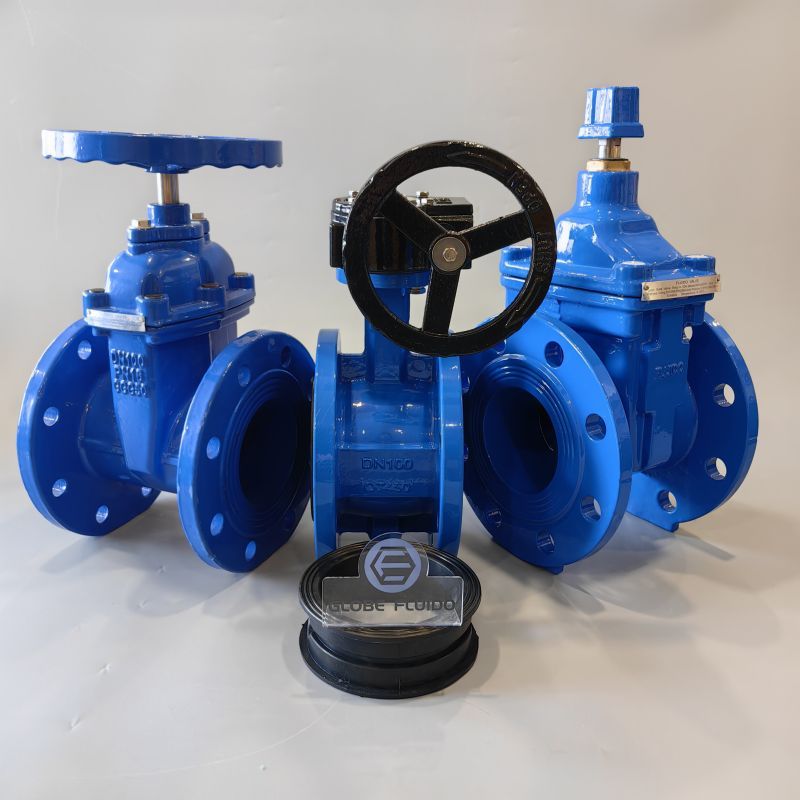Advantages and disadvantages of various valves
A gate valve is a valve whose opening and closing body (gate) is driven by the valve stem and moves up and down along the sealing surface of the valve seat, which can connect or cut off the fluid channel. The gate valve consists of a lower valve body, an upper valve cover, a gate, a valve stem, a handwheel, a sealing ring and other parts.
Advantages:
1) The fluid resistance is small.
2) The torque required for opening and closing is small.
3) The shape and structure are relatively simple, and the manufacturing process is good.
4) The structural length is relatively short.
5) It can be used on the ring network pipeline where the medium flows in both directions, and the flow direction of the medium is not restricted.
6) When fully open, the sealing surface is less eroded by the working medium than the stop valve.
Disadvantages:
1) The overall dimensions and opening height are large, and the space required for installation is also large.
2) During the opening and closing process, the sealing surface is relatively rubbed and worn, and it is easy to cause abrasions even at high temperatures.
3) Generally, gate valves have two sealing surfaces, which adds some difficulties to processing, grinding and maintenance.
4) The opening and closing time is long.

Stop Valve
Description: A stop valve features a valve disc that moves along the center line of the valve seat, with the opening size directly proportional to the disc's stroke.
Advantages:
Less friction between the valve disc and seat, making it wear-resistant.
Smaller opening height compared to gate valves.
Single sealing surface for easier manufacturing and maintenance.
Packing materials like asbestos and graphite offer high temperature resistance.
Disadvantages:
Higher minimum flow resistance due to the change in medium flow direction.
Longer stroke and slower opening speed compared to ball valves.
Description: A butterfly valve uses a disc that rotates about 90° to control the fluid flow.
Advantages:
Simple structure, small size, and light weight, suitable for large-diameter valves.
Quick opening and closing with low flow resistance.
Suitable for media with suspended particles and powdered or granular media.
Good corrosion resistance with materials like stainless steel, copper alloy, and rubber.
Disadvantages:
Limited flow adjustment range; nearly 95% flow is achieved at 30% opening.
Not suitable for high-temperature and high-pressure systems; typically used below 300°C and PN40.
Poorer sealing performance compared to ball and stop valves, suitable for less stringent sealing requirements.
Description: Evolved from the plug valve, a ball valve uses a sphere that rotates 90° around the valve stem to control the flow.
Advantages:
Very low flow resistance (virtually zero).
Operates without lubrication, suitable for corrosive media and low-boiling liquids.
Reliable sealing across a wide range of pressures and temperatures.
Rapid opening and closing, ideal for automated systems.
Fully welded bodies can be buried underground, with a service life of up to 30 years, making them ideal for oil and gas pipelines.
Disadvantages:
The main sealing ring material, polytetrafluoroethylene (PTFE), has a high expansion coefficient, is sensitive to cold flow, and has poor thermal conductivity, requiring careful design for the valve seat seal.
PTFE has a low temperature resistance, suitable only up to 180°C, and is generally used below 120°C for long-term applications.
Worse adjustment performance compared to stop valves, especially pneumatic or electric valves.
Advantages:
Lift Check Valve: Simple structure.
Swing Check Valve: Compact structure, low fluid resistance, suitable for large-diameter pipes, easy installation and maintenance, rapid opening and closing, and good sealing performance.
Disadvantages:
Lift Check Valve: Generates large noise due to the spring resistance during operation, and the spring is prone to corrosion and wear, affecting its lifespan.
Swing Check Valve: More complex structure and higher manufacturing cost compared to lift check valves, and requires precise installation to ensure smooth rotation of the valve disc.

